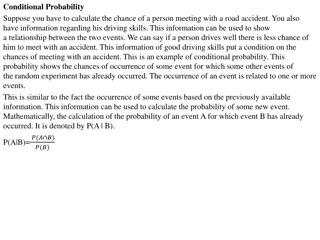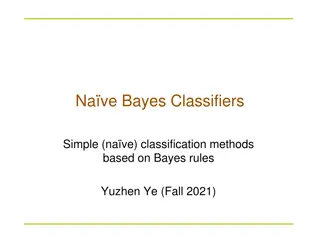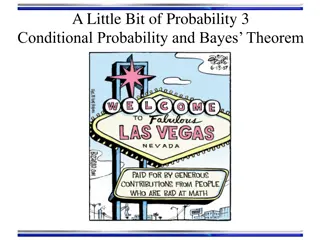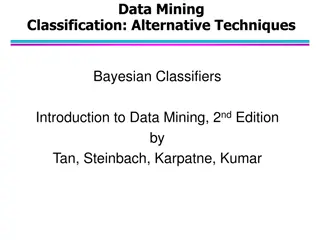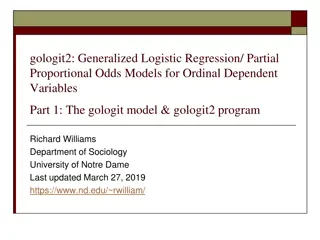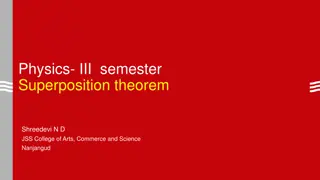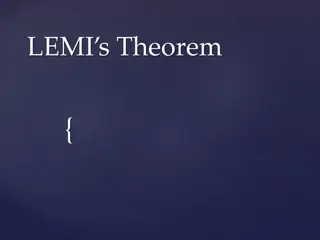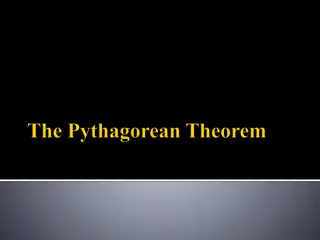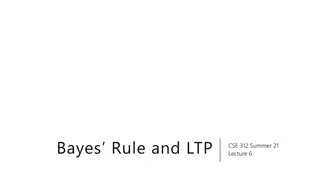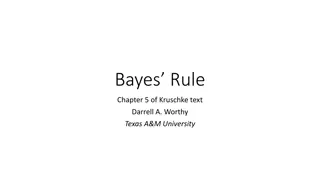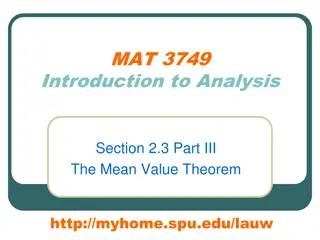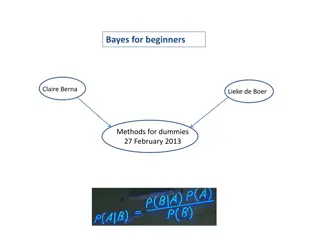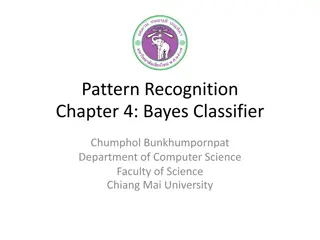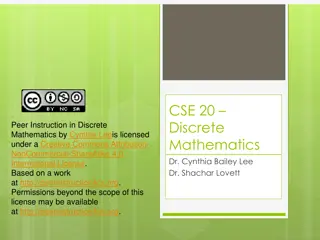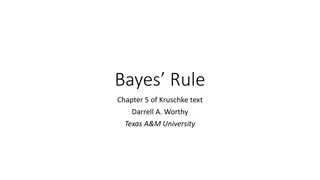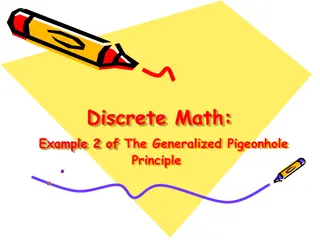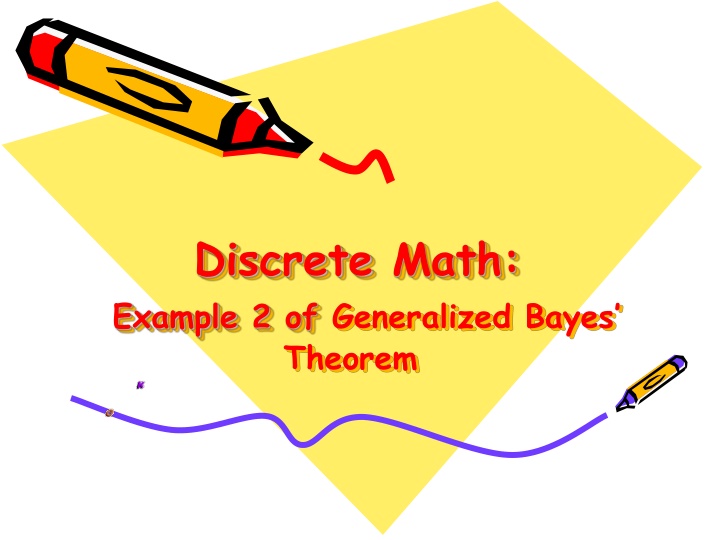
Example of Generalized Bayes Theorem in Discrete Math
Learn how to apply the Generalized Bayes Theorem in a Bayesian spam filter scenario to estimate the probability of a message being spam based on the occurrence of certain words. Explore the calculation process and understand the implications of setting a rejection threshold. References to key textbooks in Discrete Mathematics are also provided for further reading.
Download Presentation

Please find below an Image/Link to download the presentation.
The content on the website is provided AS IS for your information and personal use only. It may not be sold, licensed, or shared on other websites without obtaining consent from the author. If you encounter any issues during the download, it is possible that the publisher has removed the file from their server.
You are allowed to download the files provided on this website for personal or commercial use, subject to the condition that they are used lawfully. All files are the property of their respective owners.
The content on the website is provided AS IS for your information and personal use only. It may not be sold, licensed, or shared on other websites without obtaining consent from the author.
E N D
Presentation Transcript
Discrete Math: Example 2 of Generalized Bayes Theorem
Example 2 Suppose that we train a Bayesian spam filter on a set of 2000 spam messages and 1000 messages that are not spam. The word stock appears in 400 spam messages and 60 messages that are not spam, and the word undervalued appears in 200 spam messages and 25 messages that are not spam. Estimate the probability that an incoming message containing both the words stock and undervalued is spam, assuming that we have no prior knowledge about whether it is spam. Will we reject such messages as spam when we set the threshold at 0.9?
Solution Using the counts of each of these two words in messages known to be spam or known not to be spam, we obtain the following estimates: p(stock) = 400/2000 = 0.2, q(stock) = 60/1000 = 0.06, p(undervalued) = 200/2000 = 0.1, and q(undervalued) = 25/1000 = 0.025. Using these probabilities, we can estimate the probability that the message is spam by Because we have set the threshold for rejecting messages at 0.9, such messages will be rejected by the filter.
References Discrete Mathematics and Its Applications, McGraw-Hill; 7th edition (June 26, 2006). Kenneth Rosen Discrete Mathematics An Open Introduction, 2nd edition. Oscar Levin A Short Course in Discrete Mathematics, 01 Dec 2004, Edward Bender & S. Gill Williamson

